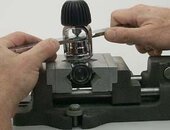SaltyWombat
Contributor
First of all, thanks everyone for answering all my newbie questions. I'm putting together a Scubatools order and don't want to mess up.
Is a breaker bar only used on yoke regs? Not DIN?
Scubatools Breaker Bar
Is a breaker bar only used on yoke regs? Not DIN?
Scubatools Breaker Bar






